Ball Python breeding season varies according to whether they are in captivity or not, and whether you decide to breed them year round. Let’s take a closer look…
In the wild, Ball Pythons breed from September to November, then lay eggs during the months of April, May or June. In captivity, on the other hand, they will breed from September to March, and lay eggs anywhere from April to September. They don’t always stick to a set breeding season!
Ball Python breeding season
In the wild, most Ball Pythons come from areas that have a minor rainy season during the months of September, October and November and a major rainy season during the months of April, May and June. But what does this mean for their reproductive cycle?
Obviously, during a rainy season is a great time to incubate eggs, but not the best time for baby snakes to go out and hunt. The dry season, on the other hand, is a terrible time for incubating a clutch, but often has increased prey abundance due to the rains that preceded it.
What this tells us is that wild Ball Pythons have to time their breeding right, or they either lose eggs from desiccation or hatch babies that will have a hard time finding prey.
Wild female Ball Pythons aim for their babies to hatch at the end of the major rainy season because prey abundance is particularly high at this time. This means they must breed during the months of September to November, and lay eggs during the months of April, May or June.
In captivity, things are a little different. If you’ve done your research, you’ll be providing your Ball Pythons with the ideal humidity, temperature and food. In these conditions, many of them abandon the breeding season and breed year round. More on this in a moment…
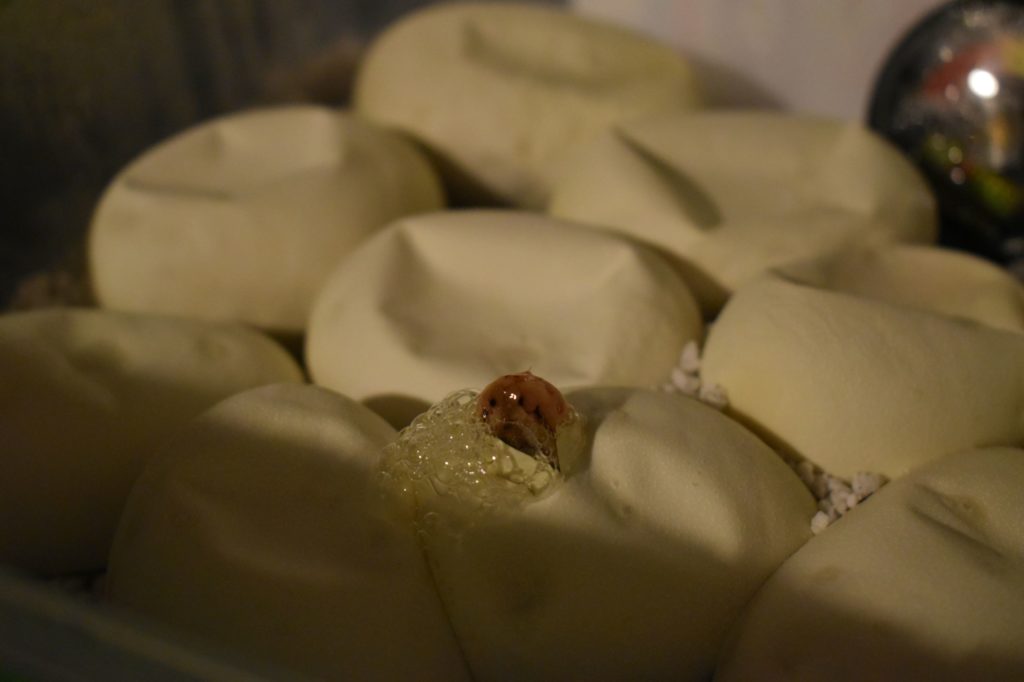
Do Ball Pythons eat during breeding season?
If you’re thinking about breeding Ball Pythons, this is probably one of your first questions. We’ve all had picky snakes that refuse to eat if you don’t have things just how they like it.
Heck, I’ve even had baby Ball Pythons that would drop their meal if I accidentally moved in front of their enclosure. On a couple of occasions I’ve had to freeze like a statue for ten minutes until they finish!
As you might expect, breeding can definitely affect Ball Python feeding. A lot of males will fast after breeding for a couple of months. Sometimes, they will start fasting in November or December, and not eat again until July.
If your male does this, then stop letting him breed after a month or two of fasting to make sure he doesn’t get too thin.
Other males, like Ruben in the photo below, keep feeding throughout the whole breeding season. In fact, Ruben hasn’t fasted once since I’ve had him. Why some males do fast and some don’t is a bit of a mystery.
What is certain, however, is that fasting is normal for many males, and not a cause for concern – so long as you don’t keep letting them breed for months while losing weight!
Female Ball Pythons generally keep eating for most of the breeding season, sometimes ravenously. Roughly nine out of ten of them stop feeding when their follicles reach a certain size, though. This is purely because they have no room left in their abdomen. Again, this is completely normal.
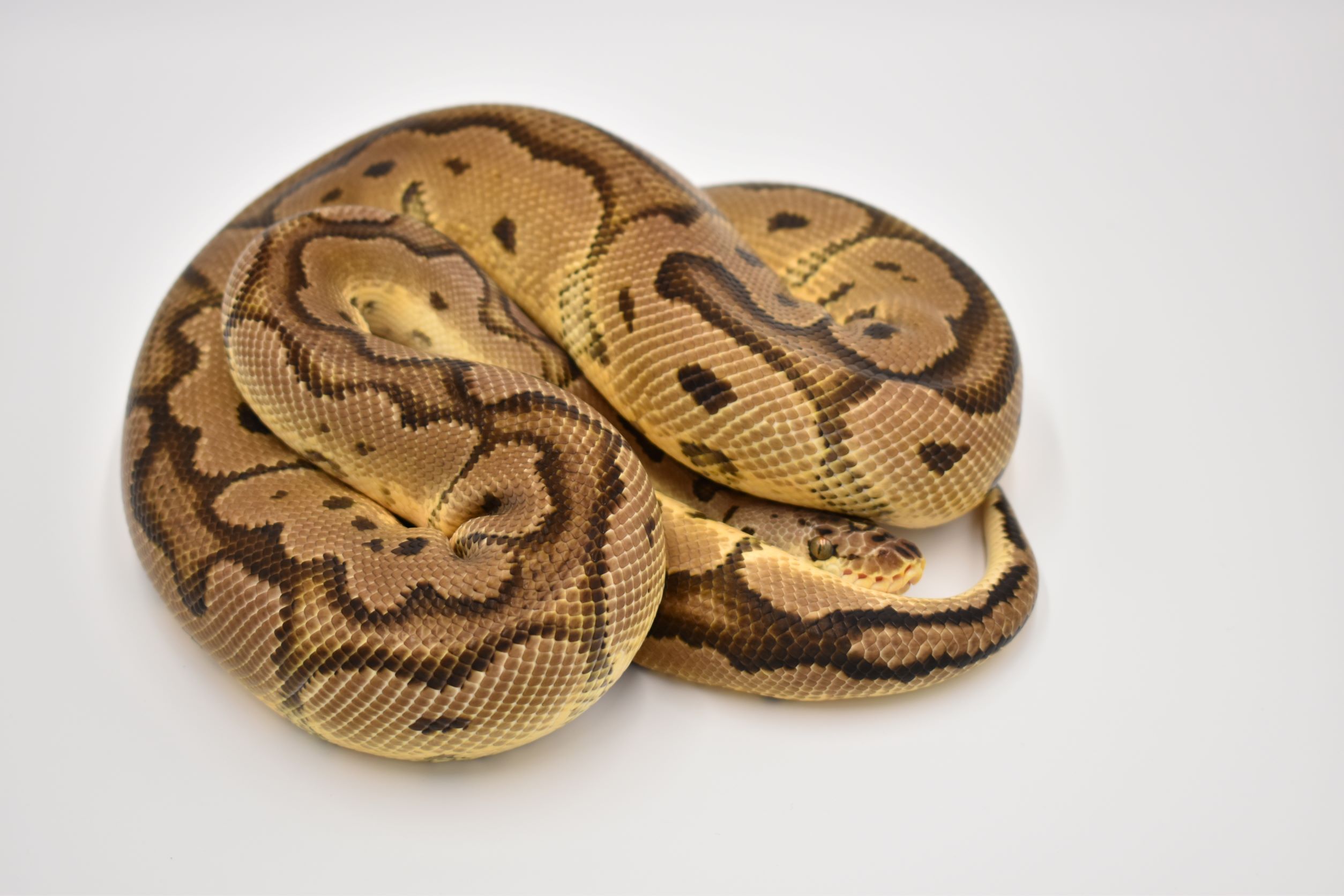
Breeding Ball Pythons year round
As you might expect, Ball Pythons have been adapting to captivity. They are a highly adaptable species, after all. In fact, it would seem their behaviour is just as flexible over time as their appearance.
One way in which they’ve adapted to the pet lifestyle is that they don’t always pay a lot of attention to the time of year. Perhaps due to their tropical nature, many of them seem eager to drop the constraints of a breeding season, and will breed year round in captivity.
It’s not even hard to get them to do this. Some Ball Pythons just breed whenever they feel like it. Moreover, a lot of breeders are noticing that the old practice of cooling this species to stimulate breeding is completely unnecessary. If they want to breed, they do – whatever we might do to influence them!
Overall, I’d say there are still a great many Ball Pythons that conform to the wild breeding season. Some females will always lay eggs in June, for example, no matter what you do. It is definitely the case, however, that there are also a great many Ball Pythons that simply breed year round without any adjustments to their husbandry.
The question you need to ask yourself is this: What is the advantage of a breeding season to you? Personally, I always stick to the same breeding season for my snakes, by always introducing males at the same time of year. This means (most of time) I know when I’m going to have baby snakes to care for.
The main advantage here is that I can plan a vacation if I want to. If this isn’t a problem for you, then by all means drop the breeding season!
There are other things to consider though…
Pros and cons of having a set Ball Python breeding season
| Pros | Cons |
| You can plan a vacation (most of the time) | You will have months with no babies to sell. This can lower your social media and online presence. By the time next season comes around some buyers will have forgotten you! Not ideal for building a reputation. |
| You can plan feeding better – buy more food when expecting several clutches etc. | If all your females are breeding – and getting very hungry – you suddenly have a big food bill. |
| You will have periods of the year with nothing going on – you can do other projects! | If all your babies hatch within a couple of months of each other you have another big food bill. |
| You will have times of the year with a very low food bill due to fasting/building snakes | You will have to arrange more deliveries of babies and deal with more potential owners at one time. |
Personallly, I start putting the snakes together from October onwards, and hope to get eggs from March onwards.
This doesn’t always work though – my snakes are captive-bred, and don’t have any real reason to follow their natural breeding season. Just look at the table below of when a few of my females last laid eggs – you’ll see that they aren’t always as predictable as I’d like:
| Female | Month she last laid eggs |
| Maisey (Spinner Blast) | May |
| Bongo (Bongo Pastel) | June |
| Big Butter (Butter Pastel) | September |
| Maude (Normal Het. Clown) | July |
How often can you breed Ball Pythons?
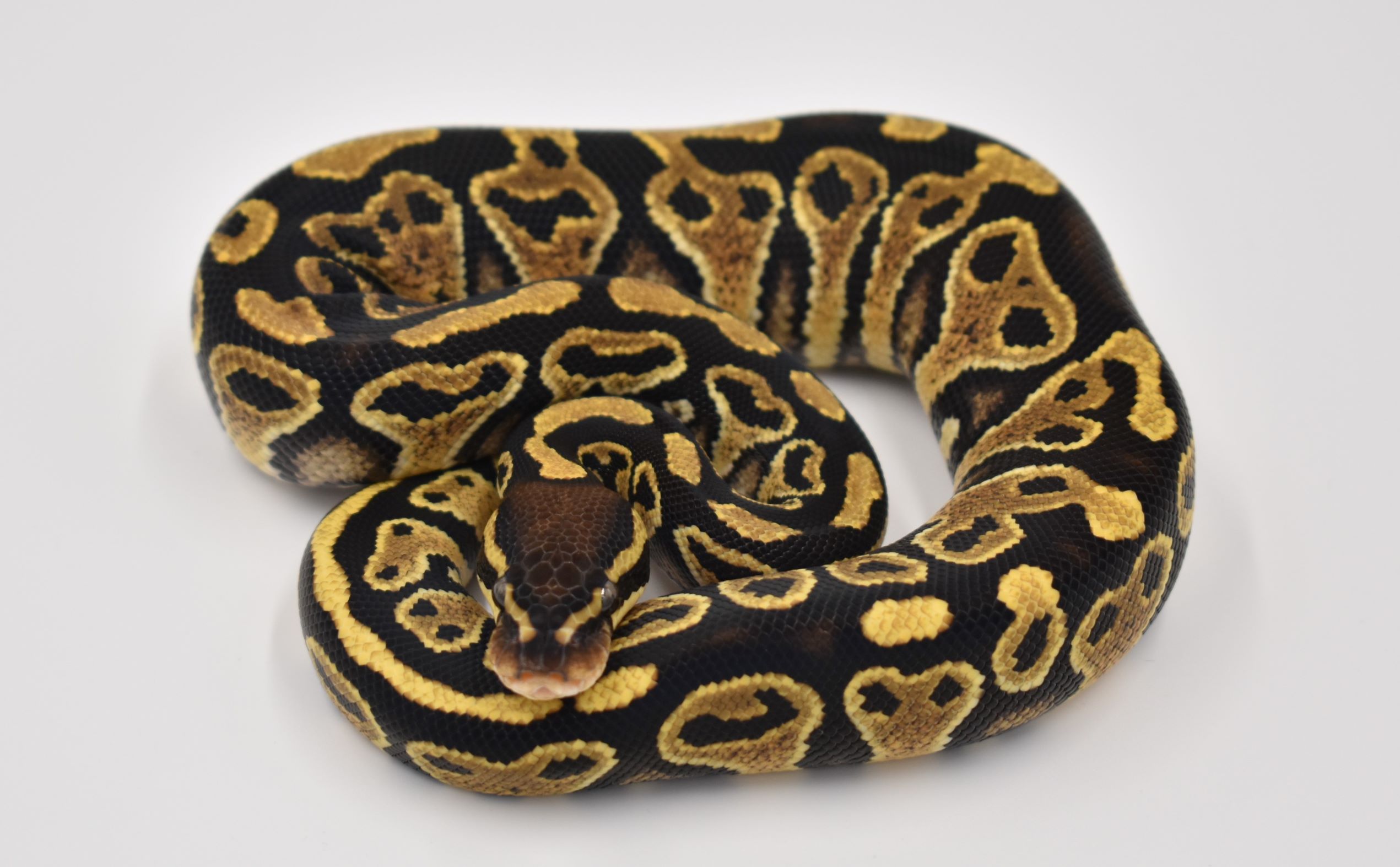
You can breed Ball Pythons once per season, or once every 12 months. Some females will breed six months after laying. This should always be on the condition that your snakes have been back on food, however. Each time they breed, make sure they have good body condition before breeding again.
It’s also important to remember that some females will take a year off of their own accord to fatten up again. There is nothing you can do about this. Just remember, they’re laying the eggs and they know best!
Signs of good body condition are:
- Iridescence
- Tight skin
- Rounded shape for females
- A chunky head (behind the eyes)
Signs of poor body condition are:
- Loose or baggy skin
- Folds along the posterior third of the body
- A triangular shape and prominent backbone
- Loss of iridescence
- Reduce frequency of shedding
- A thin head
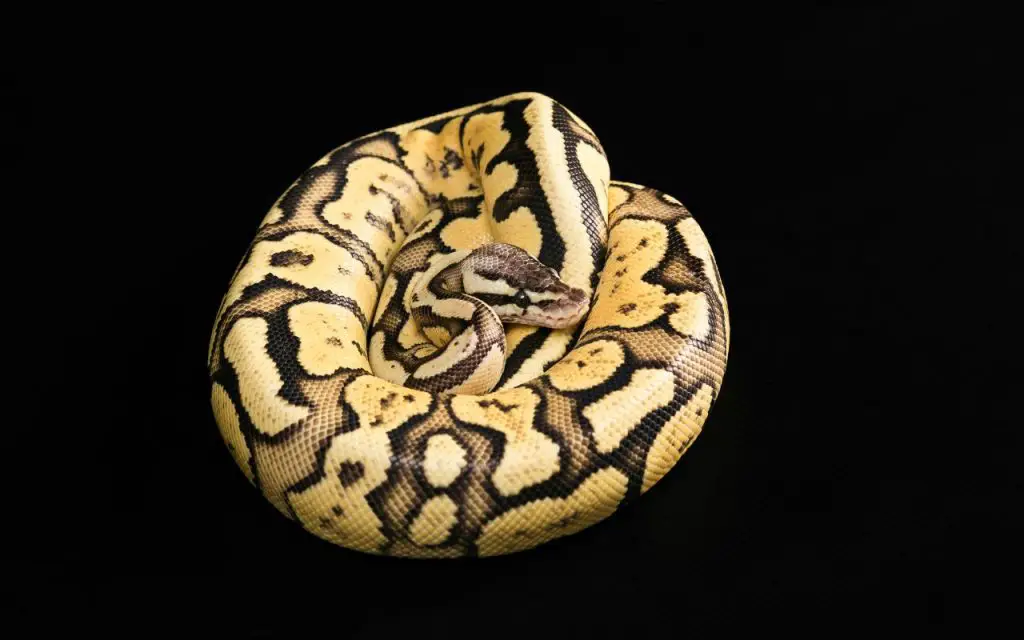
Ball Python breeding weight
Ball Python breeding weight is a subject of great debate amongst enthusiasts. Some people say it’s fine to breed females at 1200 grams, while others will practically scream at you for even suggesting breeding them under 1800!
Just have a look on the forums and you’ll see some heated discussion on the subject, that occasionally degenerates into opportunistic bullying.
Myself, I find that by the time my females are ready to breed, they are always over 1500 grams in weight. That’s when they’re ready, not because I chose that weight. I’ve tried pairing 1200 to 1300 gram females in the past and they have locked (mated) but produced no eggs.
It would seem that the females know best, and if they can breed then they will. If they’re too young they simply won’t lay. That’s not to say you should try breeding them at 1200 grams, however.
Though I don’t actually believe it will do them any harm, it is possible that leaving a female another year to reach 1800 grams instead of 1200 will lead to her producing a larger, healthier clutch.
As a breeder, big, healthy babies should be what you want to be known for. That’s why I just wait until my females are over 1500 grams these days. Bigger females for bigger clutches. Get it?
Males can breed at lower weights than females
My males, on the other hand, generally start breeding between 800 and 1200 grams in weight.
Other breeders, have had success breeding males at much lower weights. Some even claim to have bred males at 300 grams! I have tried breeding males under 800 grams, but none of mine have ever wanted to. Perhaps I simply feed mine a lot, and they are heavier by the time they’re old enough to breed?
Whatever the case, it’s important to remember that the smaller your Ball Python is, the less energy reserves it has for breeding, and the harder it will be for it to rebound if it goes off food. With this hobby, patience is vital.
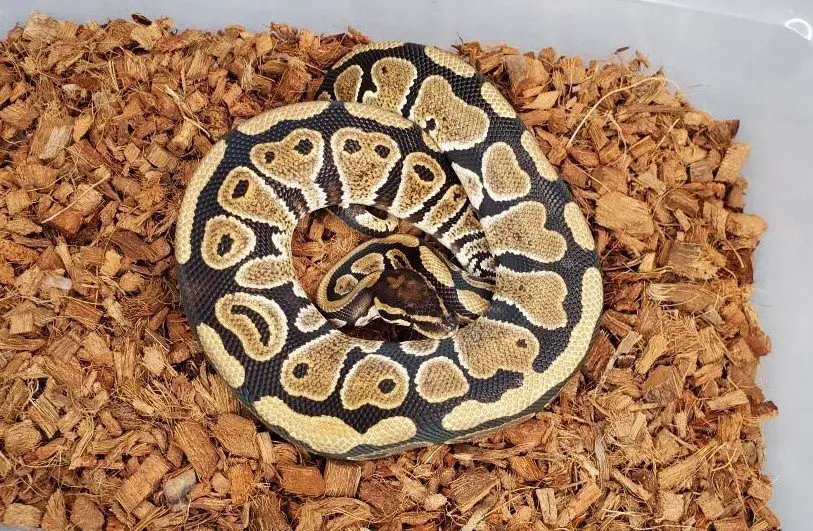
Ball Python breeding behaviour
Some Ball Pythons will give you no signs whatsoever that they are ready to breed. This is especially true of certain older, heavier females.
On the other side of the coin, some females will show a huge increase in appetite, which is a sign they’ve started building follicles. At this point, it’s a good idea to get a male in there ASAP.
For their part, males often get very restless when they’re ready to breed, and will try to escape constantly. Again, this is your signal to pair them up with a female.
When you do put them together, you’ll notice a range of breeding behaviours. The most noticeable behaviour is tail-wagging. Females lift their tails and swish them from side to side. Their aim is to spread their scent around the enclosure to entice the male. If your female does this, you can be sure that she’s interested in breeding.
Other behaviours are shoving, climbing and defecating. Though none of these sounds romantic to our ears, they are all indicative of courting.
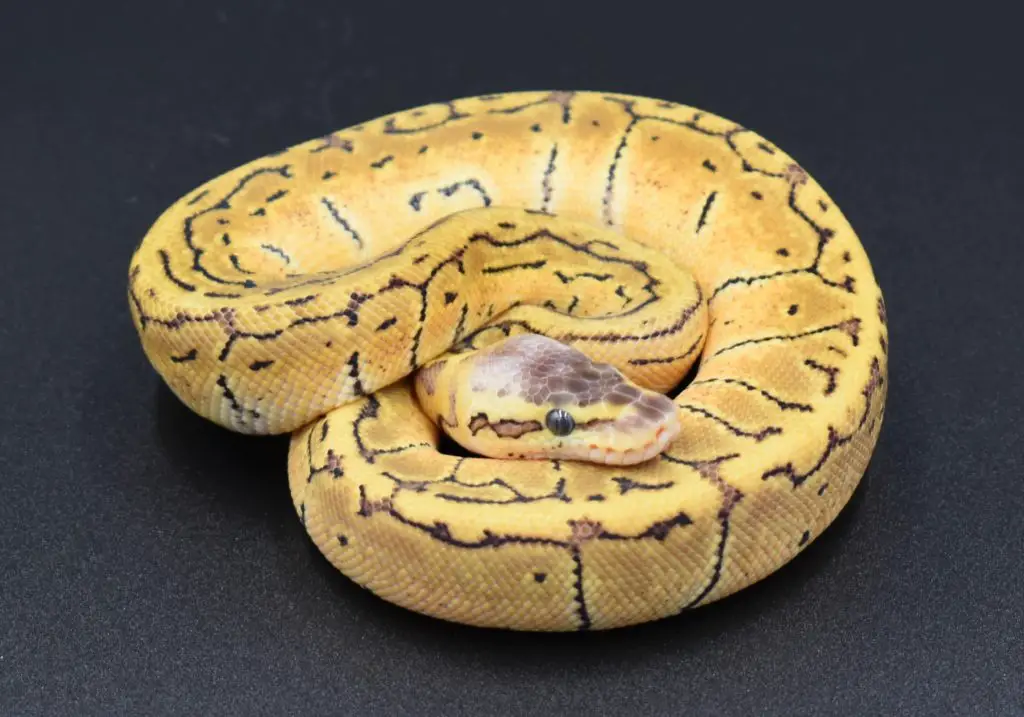
Ball Python follicle development
Females start developing follicles early in the breeding season. A common sign that this is happening is that they will began moving to the cool side of their enclosure. This is yet another reason it’s important to have a thermal gradient in their tub.
At the same time, they may wrap around their water bowl, lay inverted, or adopt strange, “lumpy” body postures. All of these signs are fine, they are not a sign of any problem.
If they don’t find enough food or any decent males to mate with females will simply absorb the follicles and wait until things improve. Or, if they are satisfied with the quality of both the males present and the food they’re getting, they will grow them until they are almost large enough to make into eggs.
When a female’s follicles reach this size, you can generally see a bulge in her midsection. This is what breeders refer to as a “build”.
If your female Ball Python has been breeding for a few months, and you can see a build, then she will soon ovulate, then shed within a couple of weeks, and lay eggs about a month after that. It is also at this point that she will most likely stop eating.
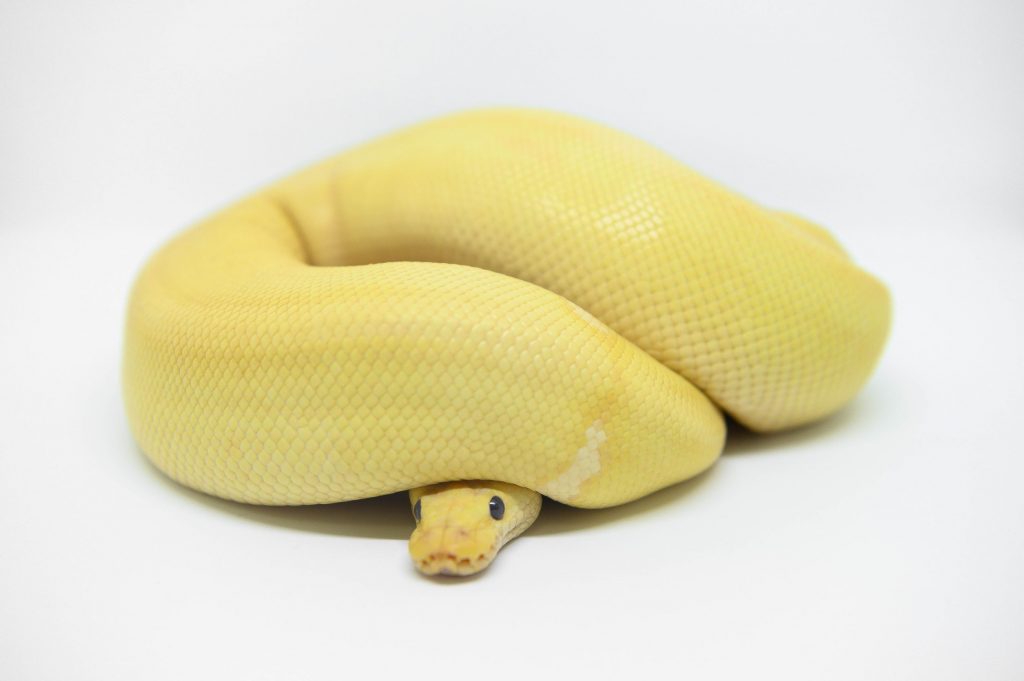
When to stop pairing Ball Pythons
If a male starts losing a lot of weight – stop pairing him! Always put his welfare first. Females will stop pairing on their own once they have either grown their follicles to a decent size, stored enough sperm, or decided not to lay that year.
How many times should you pair Ball Pythons?
If both your male and female are still feeding and locking (mating/copulating), then keep putting them together. It might take three locks, or it might take seven – but if they’re both healthy and feeding it does no harm! There is nothing unusual about these snakes locking for many months before laying.
Summary Video
The bottom line
In the wild, and in certain climate zones Ball Pythons will breed from September to November, and lay eggs during the months of April, May or June.
In captivity, you can alter this cycle. Many of them will simply breed whenever you let them, but you should weigh up the pros and cons. Do you want a breeding season for your animals or not?
How important is it for you to spread your feeding costs, or to be able to go on vacation, for example? These are questions that are worth considering before you start pairing your snakes.
In case you didn’t have time to read the full article, check out the quick Ball Python breeding summary video below. It gives you the main topics covered in around a minute.
More on Ball Python breeding in general:
Back to the Ball Python reproduction page
